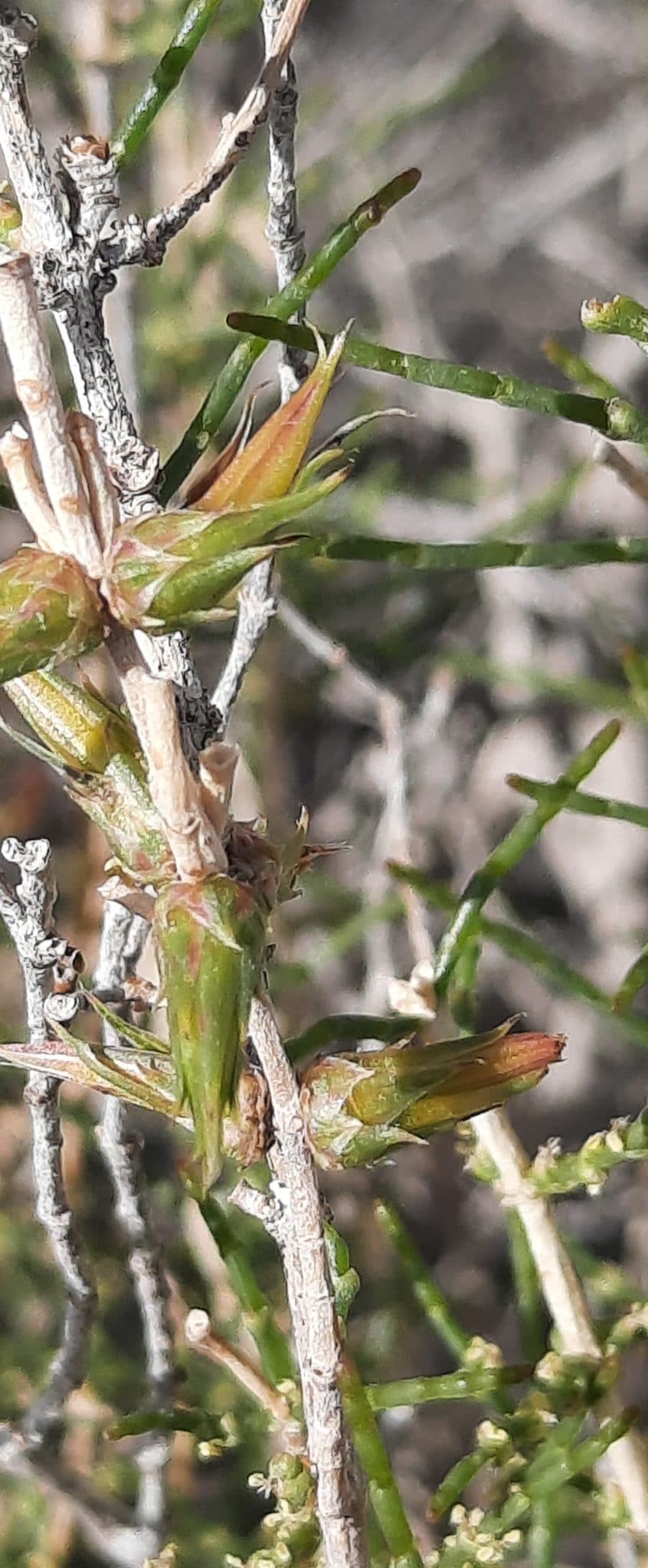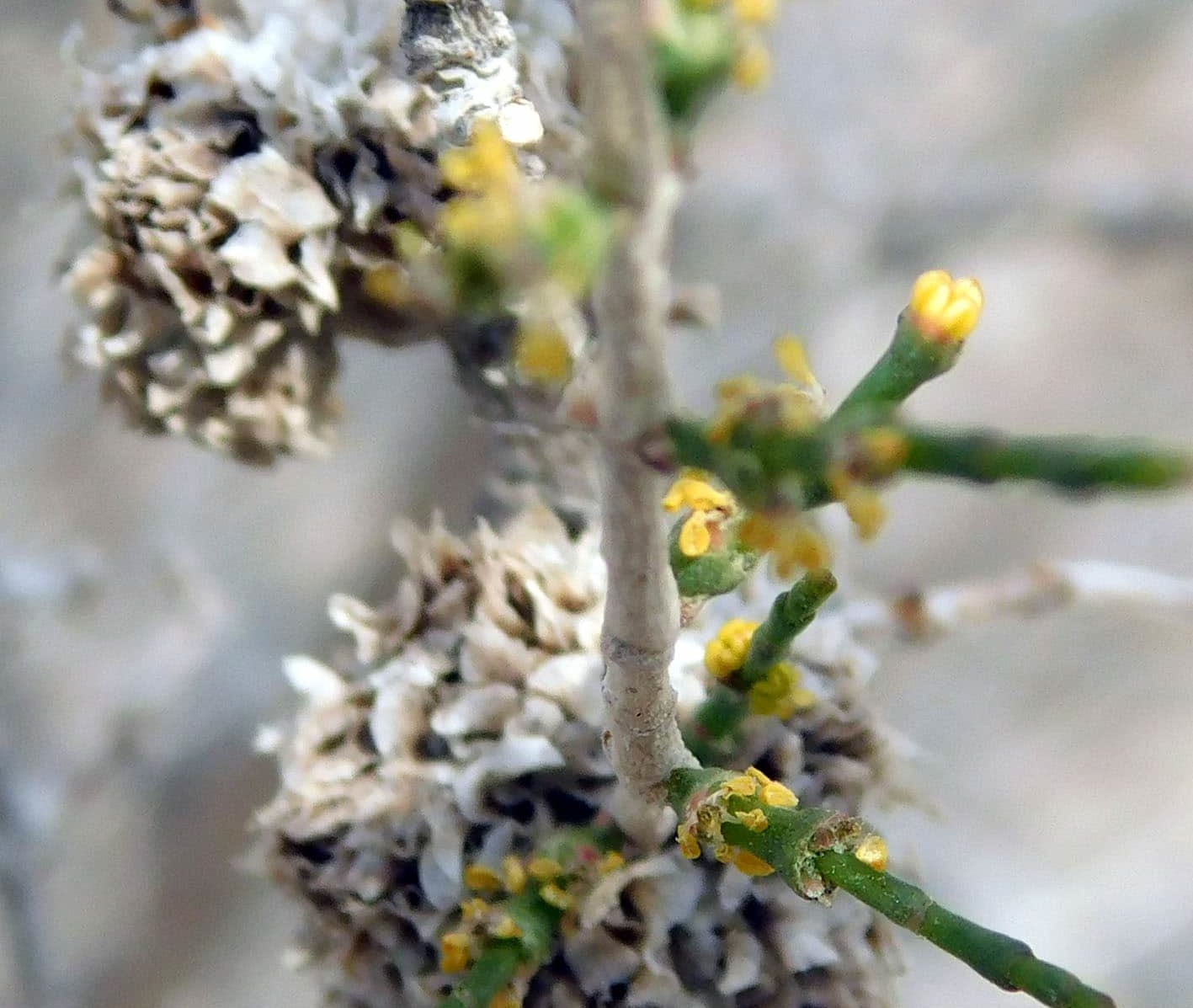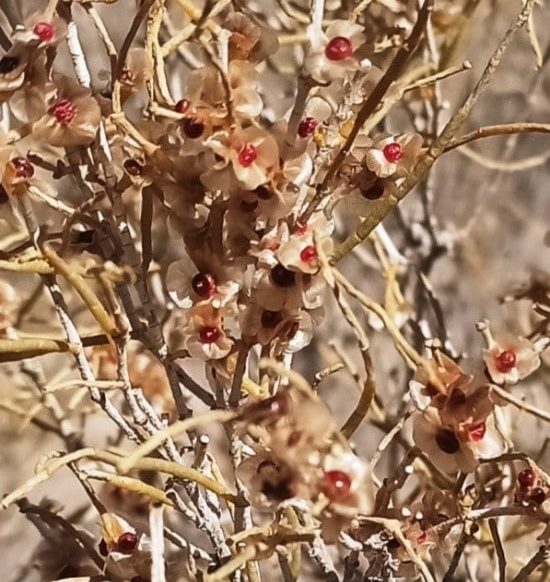A.N. Bukeikhan Kazakh research institute of forestry and agroforestry is the Рroject implementation agency Asian Forest Cooperation Organization AFoCO/ 020/2020: Investigation of the resistance of black saxaul (Haloxylon aphyllum) forms to gall-forming insects. Research is being conducted on the territory of the Kyzylorda region from October 2020 to September 2022.
The main objectives of the project are:
а) Analysis of the pest foci and clarification of the species composition of gall-forming pests in the foci of saxaul, the allocation within the population of individual plants of saxaul not damaged by pests in the lesion;
b) Carrying out laboratory tests for biochemical composition in plants and their genetic structure, as well as the study of anatomical and morphological features of plants not damaged by pests;
c) Collection of planting materials from resistant plants within the species for the possibility of further study of the heritability of this property.

The description of the natural and climatic conditions of the study area (climate, surface and ground waters, soils) was carried out, a characteristic of the saxaul plantations of the study area (forest, natural and forest vegetation zoning, distribution by age groups, typological diversity) was given. A review and analysis of the spread of forest pests in the territory of the Kyzylorda region has been carried out. Detailed surveys of the foci of the Kyzylkum forestry were carried out in 2 selected groups of forest types and different age groups. Additionally, we laid 2 test plots in the growing plantations with a predominance of white saxaul in the composition of the plantation.
Samples of various gall-forming insects were selected on the test plots, the total infestation of trees in the focus was assessed and an individual enumeration of various types of galls was made to establish the contribution of each species to the infestation of black saxaul trees. The identification of all prevailing and recorded gall-forming insects was carried out. As a result, data were obtained on the species composition and contamination of the studied areas.
On test plots with a predominance of white saxaul in maturing plantations, the degree of infection of trees by gall-forming insects is assessed as weak. In young and middle-aged stands with a predominance of black saxaul, it is assessed as weak. With an increase in the age of the stands, the infestation increases and in ripening, ripe and overmature ones is assessed as medium and strong.
Most of the species of gall midges are common, but a specific fauna has also been revealed on the white saxaul. In Kazaly forestry, 21 species of gall midges (Halodiplosis – 9 species, Stefaniola – 12) have been identified only on black saxaul, 11 species only on white saxaul (4 and 7 species, respectively). Common to both species of saxauls are 6 species (3 species each). One species of psilida and a plant mite are also common.
The foci on the studied TPs are complex, but the dominant species on Caillardia аzurea, Halodiplosis noxia, Halodiplosis vernalis, Halodiplosis festinans, Halodiplosis stackelbergi, Halodiplosis ulkunсalkani. All species of the genus Halodiplosis are characterized by the formation of buds strobiloid galls, which are found on all TPs selected for study, but their numbers vary greatly. All species prefer areas of saxaul forest with old-growth trees. Only some species were rare in all surveyed areas (Halodiplosis biennis, Halodiplosis infestans, Halodiplosis consociata).






With the combined effect of different types of gall midges on saxaul, it is very difficult to assess the proportion and degree of influence of each of the species. The variety of species of gall producers and other insects, as well as their number on white saxaul, is much less than on black. Probably, white saxaul, judging by the weak infestation by gall-forming insects, may also be promising for breeding work to develop more resistant saxaul species in relation to gall-forming insects.
The estimation characteristics of the studied trees and the selection assessment were given. A general description of the growing conditions of the studied plants was carried out. In the study area, mainly bush-like forms of saxaul grow in height from 0.68 to 1.36 m. The highest plants have an average height of 1.62 to 2.66 m. When examining saxaul plantations on all test plots, most of the trees of weak growth and low quality (crooked, undersized, etc.) were identified. According to the results of the selection assessment, minus trees predominate on the trial plots. In terms of breeding, saxaul forests are poorly studied. Polymorphism is also insufficiently studied, although saxaul is characterized by significant intraspecific variability.
Plant samples were selected, prepared and sent for laboratory studies on the biochemical composition of plants the Braintree Biotechnological Research Center. The results of this analysis show that in the samples of saxaul damaged by gall-forming insects, the content of Calcium (Ca), Potassium (K) and the level of Nitrogen (T-N) was low, and the level of Phosphorus (TP) was significantly lower (almost 4 times) than in the samples. taken from undamaged plants. The data obtained in comparison of the chemical composition of damaged and undamaged plants by gall-forming insects are very important and already give definite results. Therefore, in the course of further work, it is planned to investigate a number of other chemical components that affect the systemic immunization of plants.
In autumn 2021, as part of one of the tasks of the Project the laid test areas in the foci of pests of gall-forming insects were visited. The plants with damages were examined. The seeds of the black saxaul were collected from intact plants in the foci of damage. Work was done to determine the quality of the harvested seeds and the seeds were sown. Seeds of black saxaul from intact plants were sown in the nursery on the territory of the branch of the Republican Forest Seed Breeding Center, Kazalinsk, Kyzylorda region.


Contributed by Dr. Yana Krekova, Research Leader, A.N. Bukeikhan Kazakh Research Institute of Forestry and Agroforestry

